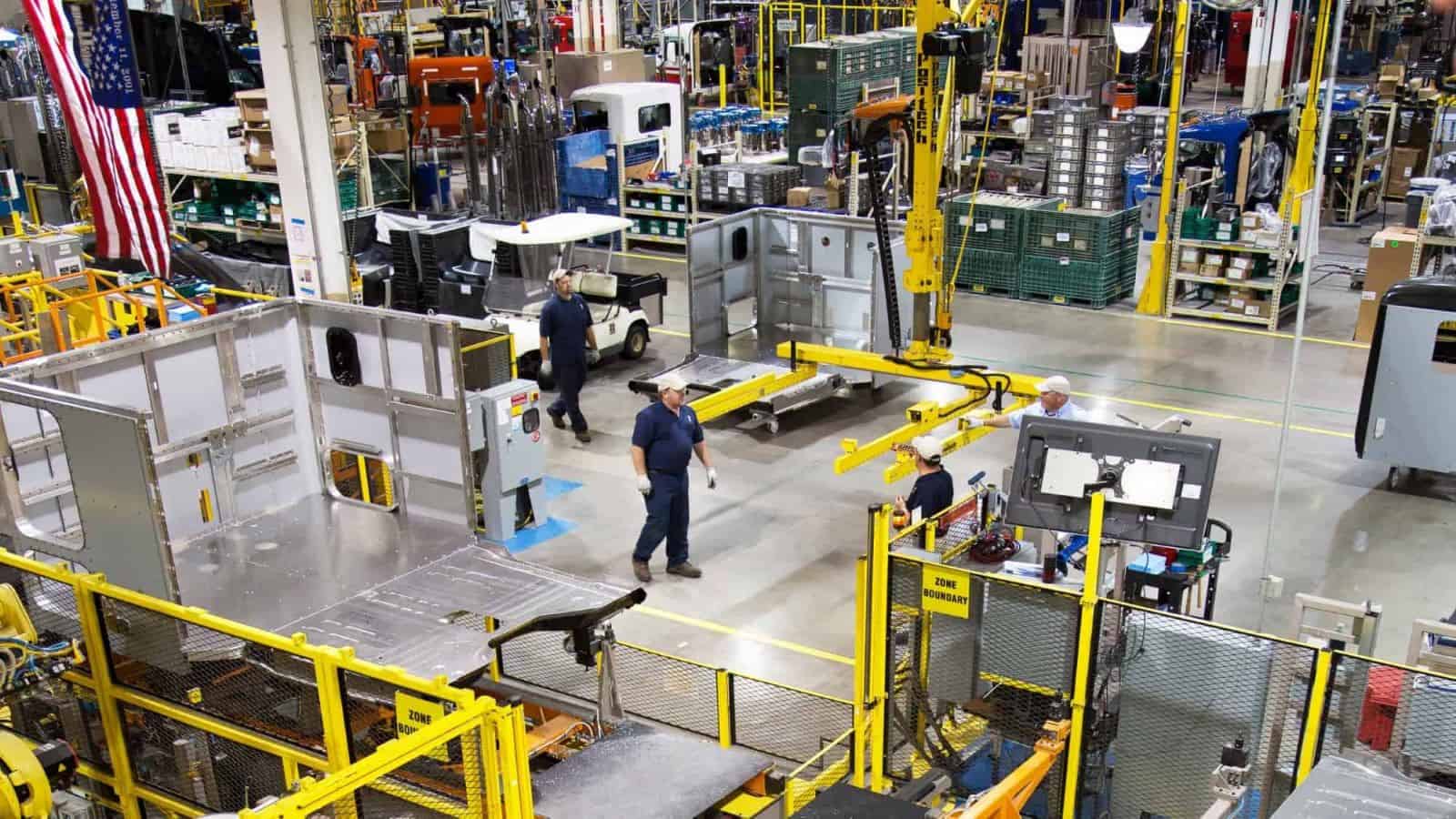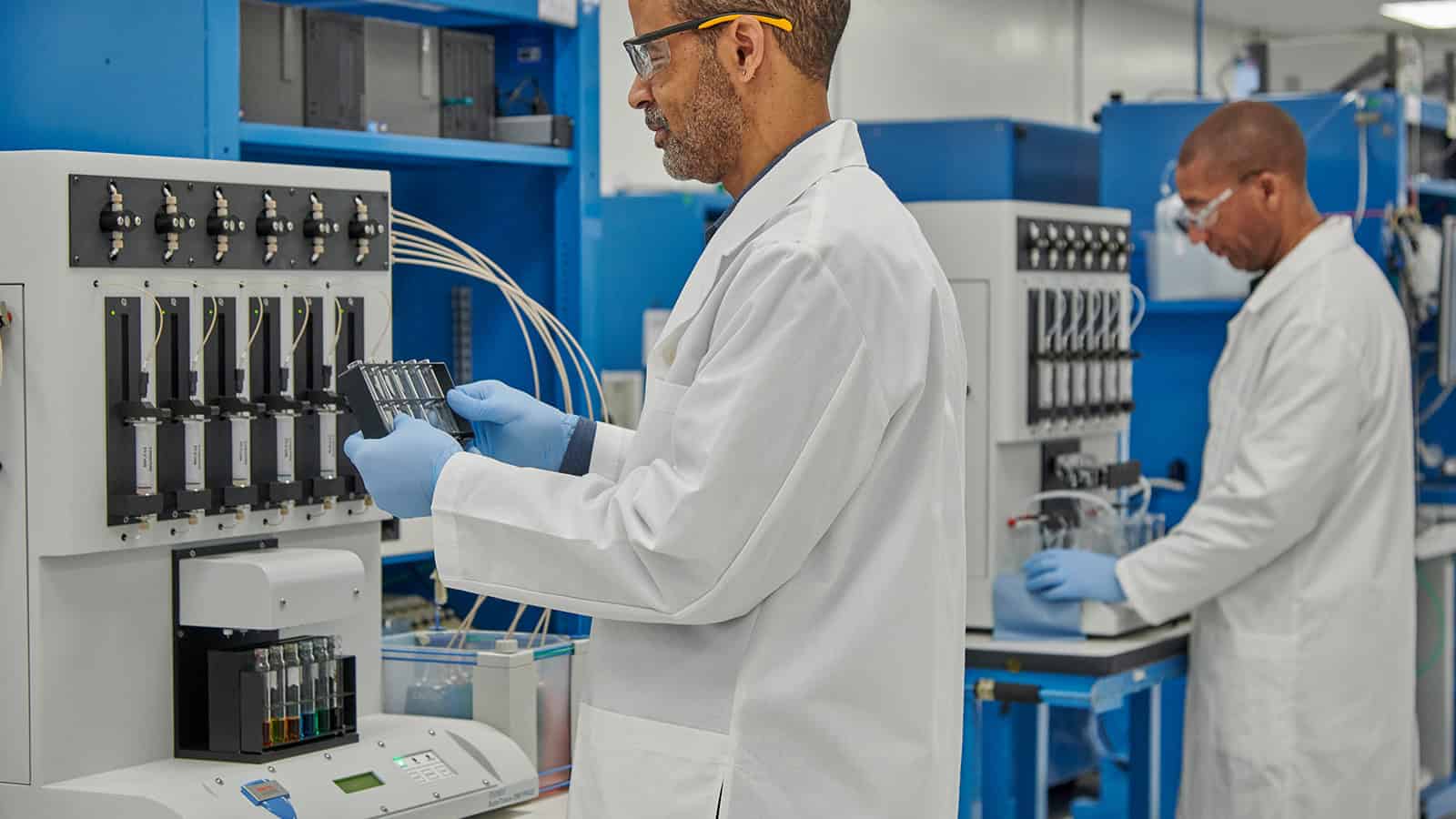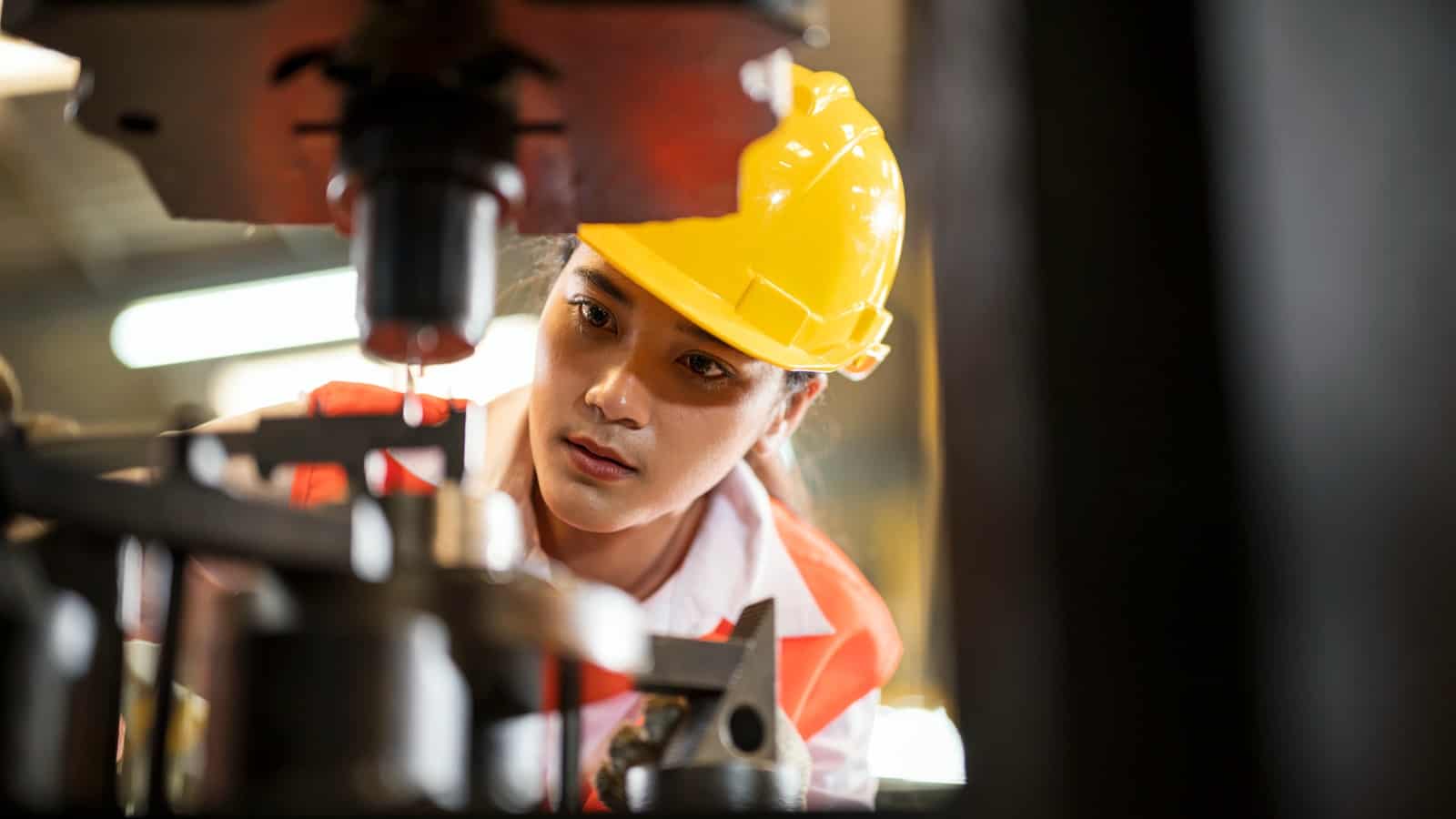NAM and Allies: PM2.5 Standard Will Hurt Manufacturers, Economy

The EPA’s overly stringent final rule on particulate matter puts continued U.S. innovation and economic growth in jeopardy, the NAM and allied groups told congressional leaders Monday.
What’s going on: In March, the EPA lowered the standard for particulate matter, or PM2.5, in its National Ambient Air Quality Standards rule by 25%, down from 12 micrograms per cubic meter of air to nine.
- This week, the NAM, along with 58 allied organizations, urged key House and Senate members to act soon to “stop this harmful rule before it takes effect.”
Why it’s important: The probable negative effects of allowing the change include “making it more difficult to create jobs, build cutting-edge factories and lead the world in the development of products that will shape modern life in the decades ahead,” the groups said.
- Compliance costs could exceed $1.8 billion, according to the agency’s own estimates.
- The lowered limit also puts the U.S. at a great disadvantage to global competitors, which “have adopted standards that are less stringent than the EPA rule and are phased in over a much longer time frame.”
What needs to happen: Congress should pass a resolution of disapproval regarding the new standard immediately.
Manufacturing Job Openings Decline

The number of U.S. job openings in manufacturing decreased in March, according to new data from the U.S. Bureau of Labor Statistics.
- Meanwhile, the number of job openings in the larger economy remained about the same, at approximately 8.5 million.
What’s going on: There were 570,000 open positions in the U.S. manufacturing industry in March, down from an adjusted 587,000 in February.
- Open positions in durable goods manufacturing also declined, to 353,000 in March from an adjusted 379,000 in February.
- Openings in nondurable goods, however, inched up to 217,000 from an adjusted 208,000.
Hires and quits: Hiring in the sector remained about the same as the last reading, coming in at 323,000 in March (down marginally from February’s 324,000).
- Total separations—which include quits, layoffs, discharges and other severance of employment—decreased slightly in March (to 330,000) from February (an adjusted 338,000).
NAM Stands Up for Biopharmaceutical Innovation Before Senate Hearing

In advance of a Senate hearing on health care costs, the NAM is ensuring that senators understand the importance of biopharmaceutical innovation to patients and the U.S. economy—and the damaging impact of policies that hinder drug development.
What’s happening: The Senate Armed Services Committee will hold a subcommittee hearing today on whether harmful policies like price controls, compulsory licensing and weaker intellectual property protections for new medicines could reduce servicemembers’ health care costs.
NAM pushes back: The NAM is highlighting the extraordinary investment—in both time and capital—that it takes to bring a lifesaving treatment to market. According to the NAM:
- The average cost of developing a new drug was $2.3 billion as of 2022;
- Across the industry, biopharmaceutical manufacturers spent $139 billion on R&D in just 2022 alone;
- It can take 10 to 15 years for a breakthrough scientific discovery to move through early-stage research, clinical trials, Food and Drug Administration approval and manufacturing; and
- Only 12% of investigational drugs that enter a Phase I clinical trial ultimately receive FDA approval—to say nothing of the hundreds of discoveries that never make it into clinical trials.
Lifesaving impact: In 2023, the FDA approved a record-breaking 71 new medicines that will improve the lives of patients.
- The biopharmaceutical industry behind these breakthroughs is also stimulating the U.S. economy: Biopharmaceutical manufacturers accounted for $355 billion in value-added output to the U.S. economy in 2021 and directly employed 291,000 workers in the U.S.
Innovation under threat: In recent years, biopharmaceutical manufacturers have been subject to harmful policies that will limit innovation and slow efforts to develop lifesaving medicines.
- The Medicare Drug Price Negotiation Program subjects life-changing biopharmaceutical innovations to government price controls, while the Biden administration’s “march-in” proposal undermines innovators’ IP rights. These policies make it riskier and more costly for manufacturers to invest in groundbreaking research.
- What’s more, the prices Americans pay for medicines are influenced heavily by middlemen, such as pharmacy benefit managers rather than biopharma companies. In 2020, more than half of every dollar spent on brand medicines went to PBMs and others in the health care system—not the medicine’s manufacturer.
The final word: “The costs of manufacturing a medicine include potentially decades of research and billions of dollars of investment,” said NAM Vice President of Domestic Policy Charles Crain. “Congress must avoid adopting policies that will stymie this lifesaving innovation.”
House Committee Forms Working Groups to Revive Tax Provisions

Following a steady drumbeat of advocacy by the NAM, the House Committee on Ways and Means has formed tax working groups dedicated to finding legislative solutions to the scheduled expiration of pro-growth tax policies at the end of 2025.
What’s going on: Each of the 10 working groups will focus on an area of the economy that will be affected by the sunsetting of certain measures in the Tax Cuts and Jobs Act.
- Ways and Means Committee Vice Chairman Vern Buchanan (R-FL) was selected to lead the American Manufacturing tax working group.
- The members of Congress assigned to this team will examine the effects of pro-growth tax policies on the manufacturing sector.
Why it’s important: “Tax reform was rocket fuel for manufacturers: 2018, the first year the Tax Cuts and Jobs Act was in effect, was the best year for manufacturing job creation in the previous 21 years,” said NAM Managing Vice President of Policy Chris Netram. “But those gains are at risk as key tax provisions expire, making it more difficult for companies throughout the supply chain to hire, invest and grow. Congress must build on the promise of tax reform to ensure that manufacturing in America remains strong.”
- Earlier this month, Husco President and CEO and NAM Executive Committee member Austin Ramirez testified before the House Ways and Means Committee about the TCJA’s positive effect on manufacturing growth and the need for Congress to preserve the pro-growth business provisions of that legislation.
- Their expiration “mean[s] that pass-through businesses like Husco will have more of our income subject to a higher rate of tax,” Ramirez said. “At the same time, the pass-through deduction will expire completely, doubling down on the tax hikes that we face. … [A]llowing tax reform to sunset will undermine much of the progress we’ve made since 2017.”
What we’re doing: The NAM will be engaging with each of the tax working groups over the next several months to ensure that manufacturing-critical tax provisions are extended and reinstated.
- To get involved, reach out to NAM Senior Director of Tax Policy Alex Monié.
IRI Announces 2024’s Top Innovator Finalists

The Innovation Research Interchange has announced the finalists for this year’s IRI Innovation Excellence Awards.
What’s going on: The honors given by the IRI—the NAM’s innovation arm—pay tribute to organizations and individuals whose outstanding vision and tireless pursuit of excellence are having a positive impact on lives today and shaping the industries of tomorrow. Honorees come from companies of all sizes and industries.
The categories: Awards are given in five categories, three to companies and two to individuals. They are as follows:
- IRI Innovation Leadership Award (individual)
- IRI Promising Young Innovation Professional Award (individual)
- IRI Excellence Award for Innovation in Sustainability (company)
- IRI Excellence Award for Outstanding Innovative Culture (company)
- IRI Excellence Award for Digital and Technological Innovation (company)
Who participates: Each year, nominees comprise innovators who are leveraging technology to enhance operational performance at their companies or sustainability and fostering a collaborative workplace culture that celebrates innovation.
- High-performing leaders who drive sustainability initiatives are also recognized, and consultants and university partners working on exciting innovation projects with a company are eligible for nomination, too.
Why they’re important: In addition to building team unity and encouraging executive leadership to invest further in innovation, the awards give companies the chance to revisit the successes, challenges and lessons learned throughout their innovative projects.
- Selection as a finalist shows customers, prospects and partners that a company or individual is at the forefront of innovation.
Attend the celebration: Winners will be announced May 16 during the Innovation Celebration and Reception at the Innovators Summit in Boston. Celebration admission is included with summit registration.
About the IRI: The IRI offers insights, case studies, research, benchmarks and strategic connections—all built around a set of innovation growth drivers as determined by members annually. Learn more about the IRI here.
Noncompete Ban Would Disrupt Manufacturing in the U.S.

The Federal Trade Commission’s vote this week to prohibit noncompete agreements between employers and their employees threatens manufacturing in the U.S., the NAM said Tuesday.
What’s going on: In a 3–2 vote Tuesday, commissioners finalized a rule that, like a draft version circulated last year, “would deem practically any noncompete clauses for paid staff, independent contractors and unpaid workers to be an unfair method of competition rendered unenforceable, and [would require] employers to tell current and former employees they’ve stopped enforcing them” (Law360, subscription).
- The final rule is set to go into effect 120 days after it is published in the Federal Register, but lawsuits have been filed against it already, and additional legal action is expected.
What’s changed: One change made to the final rule following the receipt of more than 26,000 comments on it allows existing noncompete agreements with senior-level executives to remain in effect.
- Another difference between the rule’s prior iteration and the final is to the ban’s sole exception. The draft “permitted noncompetes for individuals selling their business or a substantial stake of at least 25%.” That threshold is not in the final version.
Why it’s problematic: The rule “is unprecedented and threatens manufacturers’ ability to attract and retain talent,” said NAM Managing Vice President of Policy Chris Netram.
- “In addition, [it] puts at risk the security of intellectual property and trade secrets—anathema to an industry that accounts for 53% of all private-sector R&D.”
- A noncompete ban would disrupt the majority of U.S. manufacturing operations, a 2023 NAM survey found.
What’s next: The NAM is considering all options in response to the final rule and is in active discussion with congressional leadership and the relevant committees of jurisdiction.
New Overtime Rule Will Cost Employers and Workers

A new final overtime rule from the U.S. Department of Labor will reduce flexibility for employees and could force manufacturers to make difficult choices about their workforces, the NAM said Tuesday.
What’s going on: The new regulation “changes the salary threshold used to determine whether a worker is exempt from overtime pay” so that, beginning Jan. 1, 2025, most employees earning less than $58,656 will be owed time-and-a-half wages for hours worked over 40 in a single workweek (Bloomberg Law, subscription).
- The current salary threshold is $35,568.
- The new rule will go into effect July 1, following publication in the Federal Register.
Why it’s problematic: The change promises to present significant challenges to employers and employees alike.
- “Quarter after quarter, manufacturers cite workforce issues, such as attracting and retaining skilled employees, as their biggest business challenge,” said NAM Managing Vice President of Policy Chris Netram. The “rule places new constraints on employers, reduces flexibility for the workers who will be reclassified and may force companies to make painful choices that limit both job creation and growth opportunities available to employees.”
What’s next: The NAM is weighing all actions to protect manufacturers across the country.
Thermo Fisher Scientific Helps Manufacturers with PFAS Testing

As government regulation of per- and polyfluoroalkyl substances ramps up worldwide, Thermo Fisher Scientific is seeing a boom in its PFAS testing business.
“We’ve seen an increase in demand from a number of countries in the Americas and in Europe,” said Toby Astill, director of environmental and food safety in chromatography and mass spectrometry at the life sciences giant. “Those regions are driving more discussions around current and future regulations than other regions.”
- In recent weeks, the Environmental Protection Agency has issued several final rules concerning PFAS. These include the first-ever national regulation limiting PFAS in drinking water to near-zero levels and, just last week, the designation of two PFAS chemicals as hazardous substances under the Superfund law.
Writing is on the wall: Thermo Fisher foresaw the need for comprehensive PFAS analysis early on. That’s why it’s been offering clients a full suite of testing capabilities for more than a decade.
- Commonly called “forever chemicals” because they do not break down easily in the environment, PFAS were used widely in everyday products starting in the 1940s, owing to their ability to put out fires and resist grease, corrosion and stains in addition to countless other consumer and industrial applications.
- Using chromatography—“technology that allows lab users to separate and analyze the different components in samples,” according to Astill—Thermo Fisher can “confirm the presence of a specific substance and determine how much is there.”
- The tech is not limited to PFAS, however; it can also detect, down to parts per trillion, the presence of pesticides, heavy metals and other substances, Astill said. And it works on samples of almost anything, including food packaging, water and even air.
Aiding compliance: In coming years, manufacturers may need to analyze their PFAS exposure comprehensively to remain compliant with Toxic Substances Control Act and other international regulations, including those from the EPA, Astill said.
- In 2021, the EPA released its PFAS Strategic Roadmap, addressing the entire lifecycle of PFAS.
- Early last year, the agency proposed the first federal limits on PFAS, instituting maximum allowable levels for six substances in drinking water.
- In January, it finalized an “inactive PFAS” rule, mandating that any company wishing to manufacture or import PFAS chemicals that haven’t been made in years must first get approval from the EPA.
- That’s where testing comes in. “Manufacturers will want to figure out their [level of] PFAS exposure—whether it’s from their supply chains or the products they’re making,” Astill went on. “Because we see an evolving regulatory landscape, manufacturers need to have a baseline of where they are today, in 2024. That way they’re more prepared for regulatory compliance, and if needed, can review data retrospectively to understand trends. In fact, in October 2023, the EPA issued a mandatory one-time reporting rule on most PFAS manufactured or imported into the U.S. since 2011.”
- This February, the EPA proposed two regulations under the Resource Conservation and Recovery Act that added nine PFAS to the list of RCRA hazardous constituents with superfund implications.
Smart legislation: Thermo Fisher recognizes that we still have much to learn about PFAS chemicals, including whether many of them are harmful in the first place and whether there are practicable alternatives. In light of the many unknowns, the company recommends that legislators take a judicious approach to their regulation.
- “We don’t yet know everything about PFAS or all the PFAS” in existence, said Astill. “We need longer-term studies so we understand what we need to regulate and what we need to measure—be it in manufacturing materials or water—before we start regulating more.”
- Forthcoming regulations should also take into account the difficulty and expense of implementing PFAS remediation solutions, she added. “Legislators and regulators should consider the fact that this is not an easy feat for companies.”
Working on an alternative: While Thermo Fisher is not involved directly in inventing alternatives to PFAS, it is working actively with organizations that are doing just that, and it’s optimistic about the outcomes.
- “It’s [been] very difficult to find something with equal properties that is less of a potential health and environmental issue,” Astill said. “But what we have is a lot of intelligent global groups collaborating to share testing data and understand what potential replacement materials make sense—and that’s a tremendous opportunity.”
Proposed “Right-to-Repair” Exemptions Would Hurt Manufacturers, Consumers

The NAM testified before the U.S. Copyright Office last week, explaining how two proposed exemptions from copyright protections would weaken manufacturers’ intellectual property rights, do significant harm to their businesses and potentially endanger consumers.
What’s going on: The Copyright Office is considering whether to recommend two exemptions from the Digital Millennium Copyright Act that would allow users to circumvent measures protecting copyrighted content.
- One proposal was designed to allow the so-called “right-to-repair” by enabling access to operational data (including diagnostic and telematics data) from automobiles, agricultural vehicles, marine vessels and more. The other is focused on industrial equipment.
NAM speaks out: “The basis of the so-called ‘right-to-repair’ movement hinges on the false notion that owners do not have the ability to repair their own equipment,” NAM Vice President of Domestic Policy Charles Crain said at the recent hearing. “The truth, however, is that the majority of [original equipment manufacturers] already provide a wide range of resources and tools that allow users—and third-party repair businesses—to maintain, diagnose and repair products.”
- The NAM previously submitted comments urging the Copyright Office not to adopt the proposed exemptions.
Why it’s important: “These exemptions would undermine manufacturers’ IP rights in service of right-to-repair—and the record does not support their adoption,” Crain continued.
- The exemptions are too broad and inadequately defined, and their proponents have “failed to show that users will be adversely affected absent the ability to circumvent [copyright law].”
- What’s more, the exemptions “would expose proprietary information to public consumption and use, likely endangering consumers and allowing for unlawful modifications of government-mandated safety and emissions limits.”
The last word: “In short, right-to-repair is a solution in search of a problem,” Crain said.
How Will AI-Run Factories Be Different?

A common theme in science fiction is the fully automated, robotized factory that manufactures nothing but robots. We’re not there yet, but the fully automated manufacturing plant has already begun making everyday products, including computer parts, electric shavers and CNC machines.
The promise of AI: Now generative AI is promising to take manufacturing automation manufacturing to a new level.
- At the 2023 Hannover Messe trade fair in Hanover, Germany, Siemens and Microsoft showcased an offering now in use in factories worldwide: a system that uses ChatGPT to generate code for industrial computers known as programmable logic controllers. (For a deeper dive into what this means for manufacturing, read the full version of this article by Tim Hornyak in the Innovation Research Interchange’s Research-Technology Management magazine.)
Why it’s important: The innovation allows users to ask ChatGPT to generate code for specific tasks (i.e., a program to operate the stamping of a part).
- In addition to saving time and reducing the likelihood of errors, it is capable of understanding commands given in natural language, a characteristic that vastly increases the number of potential users.
Efficient designs: Creating more efficient designs is another early use case for generative AI.
- General Motors has used the technology to evaluate better designs for some of the roughly 30,000 parts that go into the average car. For example, a standard seat bracket—an important safety component that binds seatbelt fasteners to seats as well as seats to the floor of the car—consists of eight separate pieces welded together.
- Generative-design software used by GM analyzed the requirements and suggested more than 150 alternative designs, far more than the two or three options a designer can typically offer. GM engineers chose one: a single piece of stainless steel that is 40% lighter and 20% stronger than the conventional part.
Pharma applications: Generative AI looks promising for the pharmaceutical industry, too, given its potential for cutting costs and drug time to market.
- Merck has used generative AI to create synthetic images of complex but rare defects, a group for which training data are limited. The drugmaker’s quality-control sensors use the synthetic images to watch for novel defects.
Other potential use cases: The possible uses for generative AI in other areas is vast and includes the following:
- Reducing time and cost involved in creating physical prototypes
- Automating search and summary of documents related to manufacturing equipment, which would speed repairs and maintenance
- Accelerating supply chain operations by forecasting demand patterns, minimizing production downtime and suggesting better transport routes
- Customizing products or solutions to better suit customer needs
- Forecasting raw materials needs, optimizing production schedules and identifying production inefficiencies
However … Generative AI in manufacturing is not without its challenges. The energy cost to power a single server rack in the U.S. is $30,000 a year.
- Just one training run for an AI engine consumes the power equivalent of 120 U.S. households per year.
- With the reliance on large datasets, manufacturers are concerned about data privacy and security, necessitating robust data-protection measures.
- The integration of AI in manufacturing may require a change in workers’ skillsets and corporate culture.
- As AI plays a more significant role in decision-making, ethical questions about bias and accountability are emerging.
- Manufacturers have to ensure that AI systems operate fairly and transparently.
Find out more: AI in manufacturing is just one of the timely topics covered in depth in Research-Technology Management, the journal of the IRI, the NAM’s innovation division. Learn more.
